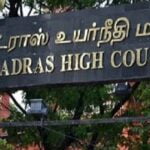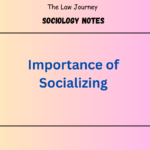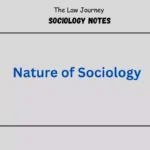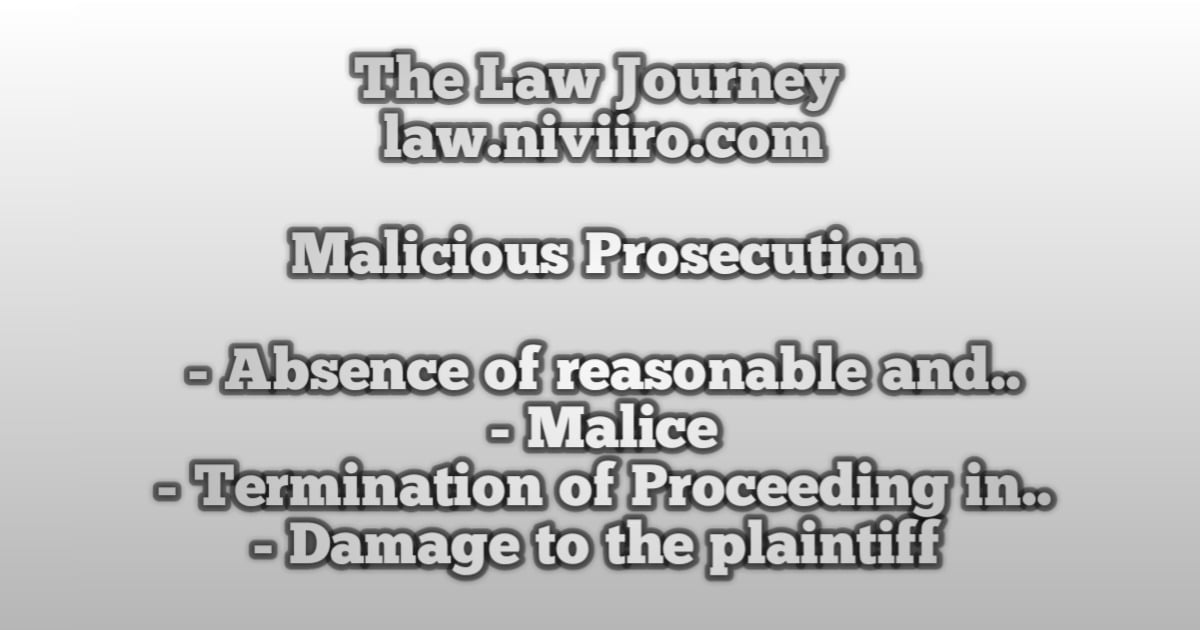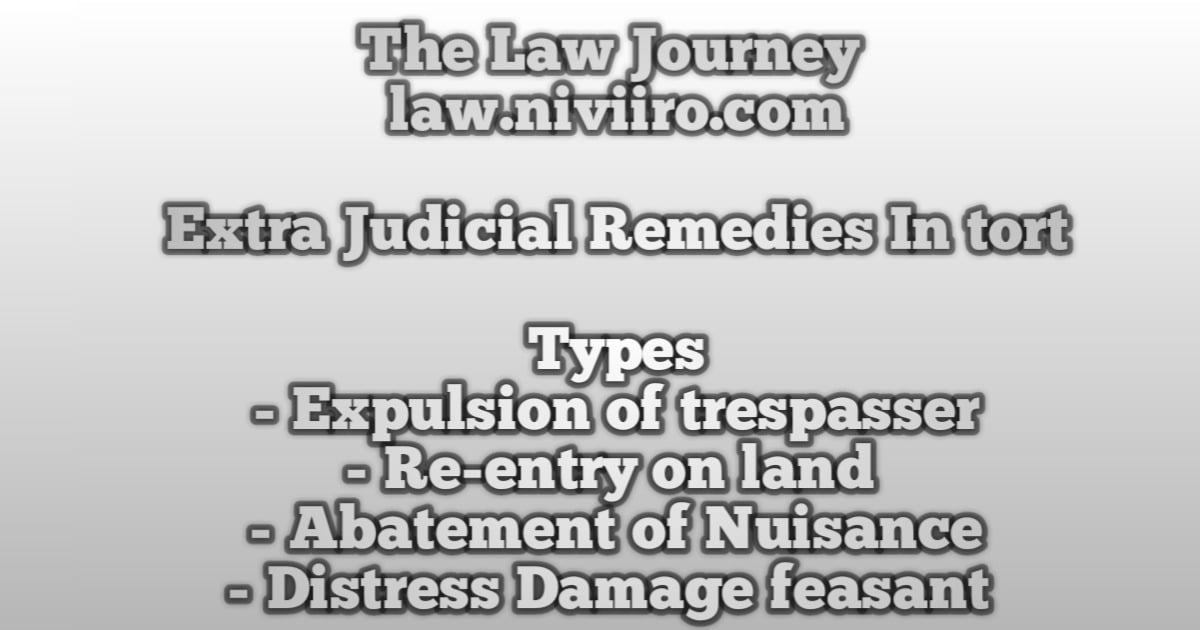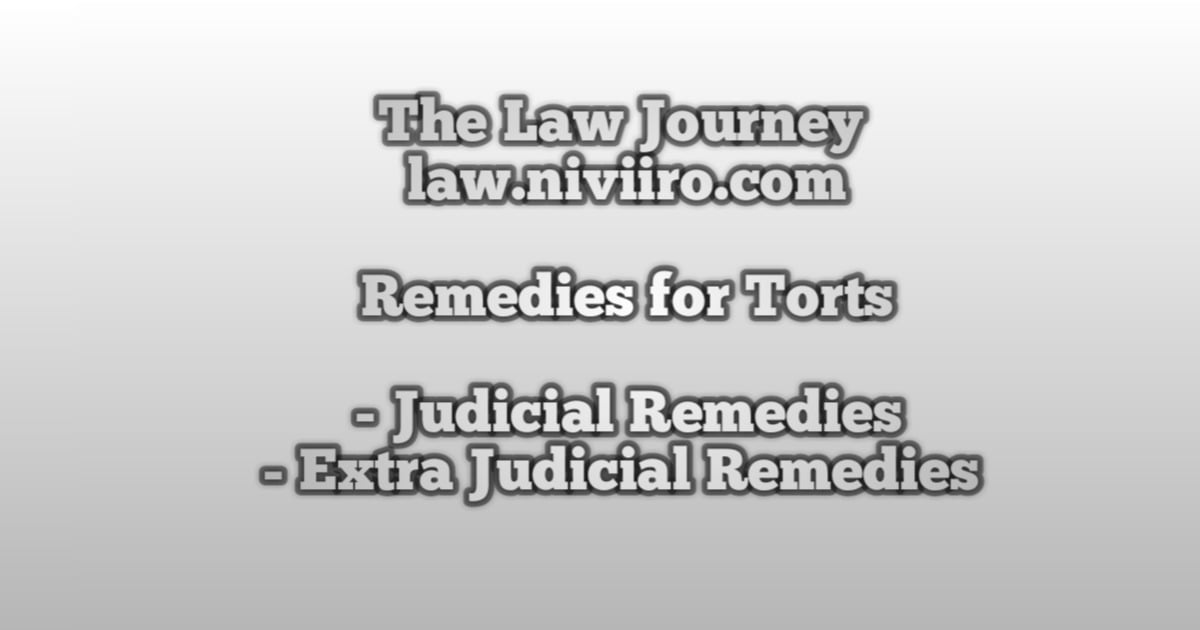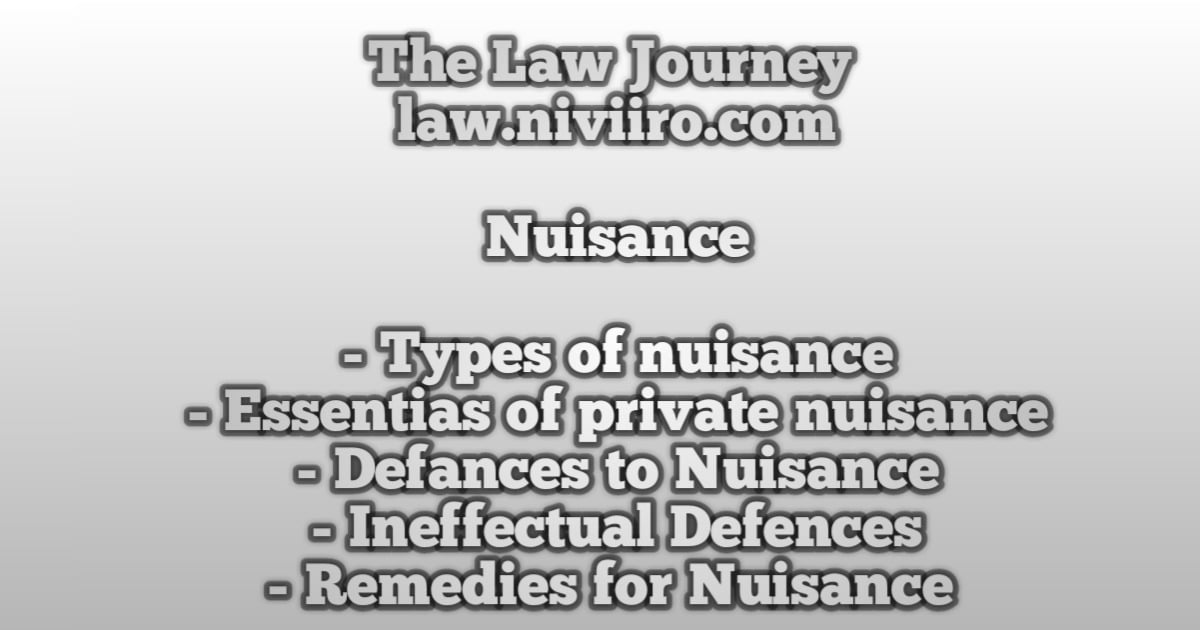It is defined as the institution of Malicious case against another without reasonable or probable case. Malicious prosecution consists in instituting unsuccessful criminal, or bankruptcy, or liquidation proceedings, maliciously and without reasonable and probable cause. When such prosecution causes actual damage to the party prosecuted, it is a tort for which he can bring an action.
Essentials for Malicious Prosecution
In an action for malicious prosecution the following essentials have got to be proved by the plaintiff :
Prosecution by the Defendant
It has two components: first, the plaintiff was prosecuted, and second, the defendant was the prosecutor. Prosecution refers to criminal proceedings in a court of law against a person. When a criminal charge is brought before a judicial official or a tribunal, there is a prosecution. The term “prosecution” has a broader meaning than “trial” and covers criminal processes through appeal or revision. Proceedings before the police are preliminary to prosecution and consequently do not result in prosecution. The prosecution is not considered to have begun until a person is called to answer a complaint.
In Nagendra Nath Ray v Basanta Das Bairagya, ILR (1929)47 Cal 25, the defendant alerted the police that he accused the plaintiff of committing a theft in his home. The complainant was arrested by the police but later released by the magistrate. In a complaint for malicious prosecution, it was determined that there was no prosecution since simple police proceedings are not the same as prosecution.
Absence of Reasonable and Probable Cause
The petitioner must additionally show that the defendant prosecuted him without justification. Reasonable and probable cause has been defined as “an honest belief in the guilt of the accused based on a full conviction, founded on reasonable grounds, of the existence of circumstances, which if true would reasonably lead any ordinarily prudent man placed in the accused’s position to the conclusion that the person charged was probably guilty of the crime imputed.”[Hicks v Faulker (1878) 8 QBD 167 ].
Malice
It is also the plaintiff’s responsibility to demonstrate that the defendant behaved intentionally in prosecuting him. It signifies that the defendant is motivated not just by the desire to carry out the law, but by an unlawful intention. It denotes a desire to harm the plaintiff rather than uphold the law. The plaintiff’s complaint must be begun in a spiteful spirit, i.e. with an indirect and inappropriate motivation, rather than in the interest of justice. Any motivation other than starting a prosecution to bring a person to justice is a malevolent motive on the part of the person who acts in this manner.[Stevens v Midland Coun Ry. (1854) 10 Ex 352]
Termination of Proceedings in Favour of Plaintiff
It is also essential that the prosecution end in the plaintiff’s favour. If the plaintiff has been convicted by the court, he cannot pursue a malicious prosecution case, even if he can demonstrate his innocence and that the charge was malicious and unjustified. Termination in favour of the plaintiff does not imply a court finding of his innocence; rather, it indicates the lack of a judicial determination of his guilt. A prosecution can be decided in a variety of ways, thus the plaintiff does not need to establish acquittal. If the plaintiff is acquitted on technical grounds, his conviction is invalidated, the prosecution is dropped, or the accused is dismissed, the procedures end in his favour.[Venu v Coorya Narayan (1881)ILR 6 Bom 376; Watkins v Lee (1839) 5 M & W 270].
Damage to the Plaintiff
It must also be demonstrated that the plaintiff suffered harm as a result of the alleged prosecution. Even if the prosecution is acquitted, the plaintiff may have incurred damage to his person (loss of liberty and mental stress), property, or reputation as a result of it, for which he might seek compensation. Malicious prosecution is one of the torts in which enhanced damages are admissible by taking into account the defendant’s motivations and behaviour, as well as the plaintiff’s injury.
Distinction between False Imprisonment & Malicious prosecution
| False Imprisonment | Malicious prosecution |
| 1. Total restraint or total confinement of a man’s liberty is false imprisonment. | 1. Malicious prosecution consists in instituting unsuccessful criminal, or bankruptcy, or liquidation proceedings, maliciously and without reasonable and probable cause. When such prosecution causes actual damage to the party prosecuted, it is a tort for which he can bring an action. |
| 2. Not necessary to prove malice. | 2. Malice must be proved by the plaintiff. Otherwise, he fails (Dr. Abarth’s case) |
3. The defendant must prove that he had reasonable justification to detain the plaintiff (Herd V. Steel Co., Robinson V. Balmain ferry Co.) | 3. The plaintiff must allege and prove that was no reasonable or probable cause to prosecute the plaintiff. |
| 4. Mistake of facts would not be a good defence. | 4. Mistake may be a good defence. |
| 5. Not necessary to prove actual Damage because its actionable per se. | 5. Actual Damage must be proved by the plaintiff. |
Related Post
What do you mean by Malicious Prosecution ?
It is defined as the institution of Malicious case against another without reasonable or probable case. Malicious prosecution consists in instituting unsuccessful criminal, or bankruptcy, or liquidation proceedings, maliciously and without reasonable and probable cause. When such prosecution causes actual damage to the party prosecuted, it is a tort for which he can bring an action.
What are the essentials in Malicious Prosecution ?
In an action for malicious prosecution the following essentials have got to be proved by the plaintiff : Prosecution by the Defendant, Absence of Reasonable and Probable Cause, Malice, Termination of Proceedings in Favour of Plaintiff, Damage to the Plaintiff.
Reference
- A.K Jain law of torts
- Law of Torts by J.N. Pandey
- P.S.A. Pillai’s – Law Of Tort
- Law of Torts by RK Bangia (22nd Edition)
- Law of Torts by Ratanlal and Dhirajlal
- Universals Law of Torts






